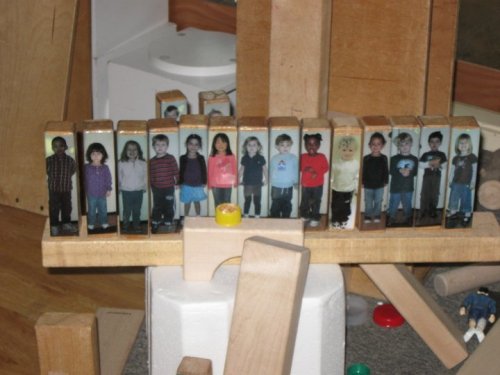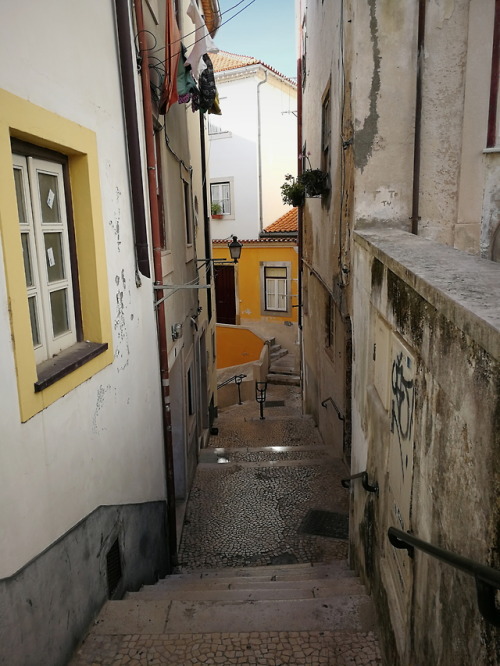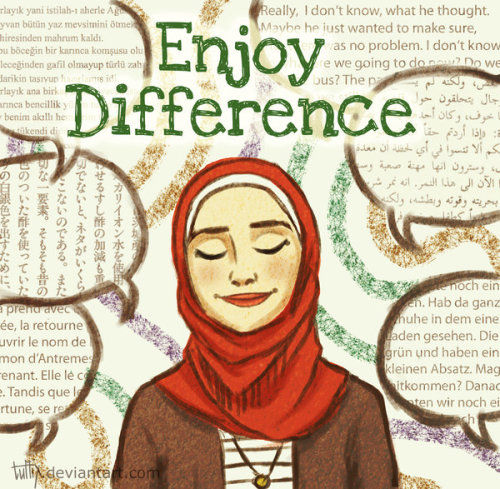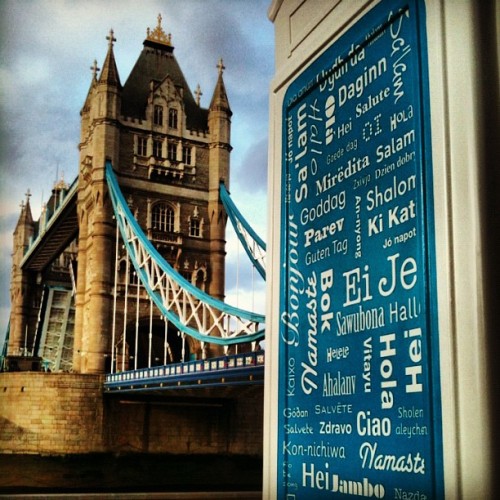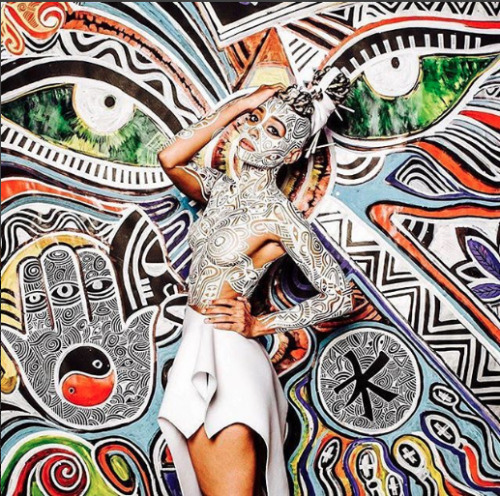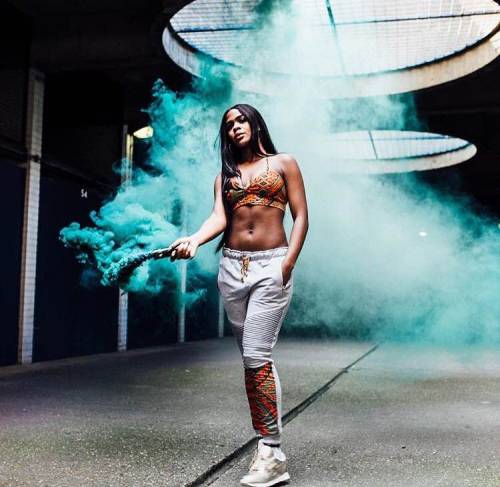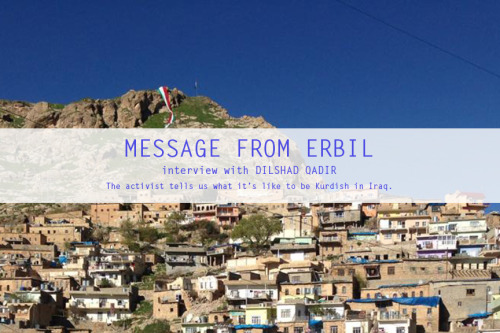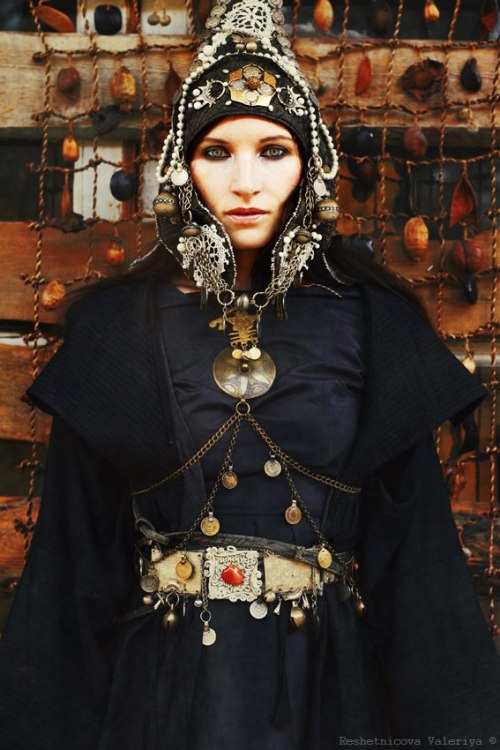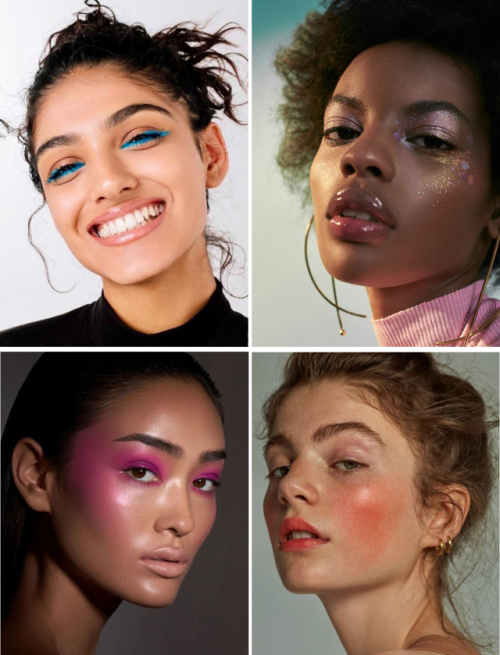#multicultural
“HIP HOP AND NEGROES ARE THE BEST!
I am a WHITE 14 year old hip-hop girl. I love negroes, as many others like me do, but there are some who hate so-called "blackies”. I have a friend who have told me a horrible but true story:
There was a WHITE little boy who lived in an appartment complex. He was perhaps 3-4 years old and lived on the 7th floor. That kid felt the need to pee when he was down at the yard, on his way up he meets a colored woman. She sees that the boy needed to pee and lets him borrow their WC.
The day after comes the boy’s mom and curse out the black woman because she let her son in, the last word she says are “You don’t touch my child one more time you fucking nigger!”
Us white people are sooo nice. I just can’t believe how one could say such things just because this person has another SKIN COLOR.
Jeez, we all look the same on the inside.
Then I can also add that when you compare a white and a black person that dance with each other, the black dance a 1000times better. I love negroes now and forever. But now I know that there are more people like me who like negroes (even other foreigners) and that’s very fortunate. But even
if many like them, there are way too many who doesn’t like them, but perhaps you can never change that. Lastly I just want to write ONE MORE thing: hip hop is awesome!
‘the negro lover’ “
From a swedish youth magazine, 20 years ago.
Post link
This world is a beautiful canvas filled with a mosaic of people, ideas & traditions ~ Embrace & enjoy the differences
Post link
“I would like to make art that helps women to be more confident. We need to support each other and spend less energy on things that make us weak or insecure. We have a really strong inner strength we need to nurture, and we shouldn’t feel like we need to just fill the roles society wants us to play. You have a to be a bit of a rebel.”
Post link
Can’t stop looking at Laolu Senbanjo’s body art after seeing it in Lemonade! The NYC-based Nigerian artist and activist on his art: “All of my work is heavily influenced by my Yoruba heritage and often related to the environment I find myself in. You will often see my travels reflected in my work.”
Photo by @theoluwaseye
Post link
Via Kiwi and Yam, multicultural clothing brand based in London. Nigerian British designer/founder Misi reinterprets Nigerian fashions and fabrics with a sporty edge
Post link
“The Kurds have suffered for hundreds of years from different regimes. No one in the region was accepting of an independent Kurdistan. But now, thousands of people from the very groups who attacked us before have been welcomed here after ISIS pushed them them out of their cities. There is hope that now that they have seen us they will understand. Forgiveness is key.” — Dilshad Qadir, Kurdish civil society activist in Erbil, Iraq
Read the full interview on what it’s like to be Kurdish in Iraq as the region changes.
Post link
Dilshad Qadir is a Kurdish activist from Erbil, the capital of the autonomous Kurdistan region in northern Iraq. The region is full of different ethnic and religious groups, and he’s worked among them on democracy, human rights, and peaceful coexistence for 15 years. We talked to him about daily life in Erbil, what it means to be Kurdish and Iraqi, and his hopes for the future.

Dilshad Qadir.
From the west, it can be hard for us to understand daily life across the Middle East. What is daily life like in Erbil?
Well the downtown area of Erbil is very interesting. At night there are lots of activities, cafés and restaurants. Most people meet friends for a coffee or shisha. When the weather is nice, people take weekend trips to the mountains.
But to be honest, since 2014—when ISIS took major areas in Iraq and the Iraqi Civil War began—the current situation has been on everyone’s minds. Before then, there was hope for the region. Now there’s not much hope: there is so much killing with ISIS, there’s an economic crisis, and there’s no national leadership: the government and international organizations are sectarian. People are focused on finding opportunity or leaving the country.
There is actually a really popular TV show that deals with these issues. It’s called Bezmi Bezm. It’s a weekly sketch comedy that’s comments on the social, economic, and political issues. It’s quite funny, and has become very popular in the past year. You hear the jokes on the street and things like that.
You mentioned sectarian divides in the government. But how do different ethnic groups interact in Erbil in everyday life?
There’s a lot of diversity in Erbil. Of course there are Kurds, but also Yazidis, Iraqi Christians, and Iraqi Arabs from the southern part of the country. Kurdistan is relatively safe, and last year, over a million people came to Iraqi Kurdistan from the Sunni conflict area just south of us. There are also people from around the world working at the international organizations and companies.
Mostly, it’s a respectful, peaceful place: everyone is interacting, in the same neighborhoods, going to the same stores. There might be some tension sometimes, but nowhere near full-scale conflict. People outside of the Middle East have this picture that we love killing, and it’s not true. We are human beings, and we’re very kind people.

A market in Erbil. Photo courtesy of Dilshad Qadir.
You’re ethnically Kurdish, but your nationality is Iraqi. How do those identities relate?
To be honest, the majority of Kurds don’t feel Iraqi. This feeling has intensified because the Iraqi government has not supported Kurdistan. Al-Maliki, the previous Prime Minister, cut Kurdistan’s budget. The Kurds supported the new Prime Minister, Al-Abadi, but that was because of pressure from the U.S. We knew the government would not support the Kurds, and it has not. Even now, Kurds in Baghdad are under threat of the Shia militia. So it does not feel like our own country. Outside of the region, Kurds always introduce themselves as from the Kurdistan region, not Iraq.
Kurdistan is a region that spans parts of Iran, Iraq, Syria, and Turkey. Do Kurds from the different countries feel unified? What are the main differences?
Yes, we feel that we’re the same people, and the main difference is really language. There are two Kurdish languages: Sorani is spoken by people in Iran and northeastern Iraq, and Kurmanji is spoken by people in Turkey, Syria, and northwestern Iraq. Of course, the states that Kurds live in have their own languages and cultures, so that does influence the Kurds that live there. But we are a unified people.

A Kurdish flag flies over hills in Kurdistan. Photo courtesy of Dilshad Qadir.
How do you see multiculturalism affecting the future of Kurdistan?
That’s the question everyone is asking. Before 2014, different ethnic groups were willing to work together under a unified Iraq. But the political system failed to bring security to all the ethnic groups, so now they want independent states. It’s a security issue.
The Kurds have suffered for hundreds of years from different regimes. No one in the region was accepting of an independent Kurdistan. But now, thousands of people from the very groups who attacked us before have been welcomed here after ISIS pushed them them out of their cities. There is hope that now that they have seen us they will understand. Forgiveness is key.
Big question: what do you see for the future of the region?
I try to be optimistic, but it’s becoming really hard. There is so much hopelessness, more than any other time. You spend your day watching the news, you become very sad, you go out to meet a friend for coffee, and you again you talk about the politics. We know the reason there is violence: for control of the resources. I think the game has become clear to everyone.
I was optimistic before 2014. Prime Minister Al-Abadi had a lot of ideas about political reforms, and he had a lot of support. But he failed—the political parties won’t allow reform. I think now it’s hard to envision something united, with different groups coexisting peacefully. I think Iraq will eventually become three states: the Kurdish state, the Sunni state, and the Shia state. Of those, Kurdistan will be the most prepared to be independent. But it will be hard to define those borders, and there will be a lot of external pressure, especially from Iran. It depends on how international leaders align.
However, when I’m working with youth, that’s when I feel the most optimistic. There is always something new, so much life. Watching them grow, going on with new accomplishments makes me happy. You can see your work has an impact. It gives me hope. ✰
See more at confluxmagazine.com
Post link
“The majority of Kurds don’t feel Iraqi. We knew the government would not support the Kurds, and it has not. It does not feel like our own country.” — Dilshad Qadir, Kurdish civil society activist in Erbil, Iraq
Read the full interview on what it’s like to be Kurdish in Iraq as the region changes.
Post link
Araki Koman is a Guinean Malian French artist who’s lived in five countries on three continents. It’s no surprise then that her love of global cultures has influenced everything from her artwork to her life choices. While living abroad, she founded OUM x YUKI, an interview-based website about finding yourself through travel. We talk to her about the aesthetics of emigration, mother-daughter connections, and being the odd one out. Photo by Marina Pen.
Tell us about your website OUM x YUKI. What is it all about?
OUM x YUKI is my website about multiculturalism, hybrid identity, and finding yourself through travel. I’ve always been inspired by cultures around the world, even as a child. I remember being four or five, going to Chinatown, and being obsessed with the colors, the smells, the sounds. When I got older I loved finding photos of fashion and aesthetics from all around the world. I was always learning and exploring.
Now I’ve lived in the UK, Denmark, Iceland, Canada, and China, and I’ve realized how travel can open your mind. All the people I’ve talked to through the website, whether they’re immigrants now or have traveled to different countries, have all had deep experiences that are difficult to describe. It becomes part of you. OUM x YUKI is a place where people can share those experiences and others can connect with them.
How did it all start?
I started it when I was in London in 2011, but it has evolved over time. I was working as a graphic designer, but I can never do just one thing, so I started selling clothes that I had from all my travels at a market. The vibe was inspired by my mom’s style when she arrived in France: a little funky and a little traditional at the same time. I decorated my stall with pictures of visual anthropology from around the world. I called the store OUM x YUKI.
The website took its current form when I was in Iceland, right after London. Living there, I connected with my parents’ immigrant experiences more than I ever had. I realized just how courageous they were. I wanted to pay tribute by focusing on the glamorous side of immigration. My website, like my clothing stall, reinterpreted earlier generations’ aesthetics with a modern eye.

Araki’s mom in France.
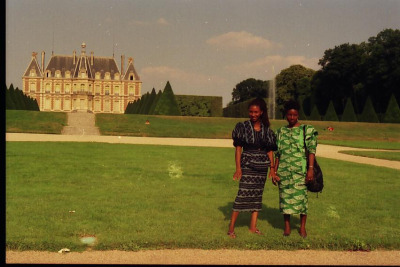
Araki’s mom and friend in France.

Araki’s mom in France.
It’s interesting that you connect family history and fashion. The usual trend is to focus on what’s up-and-coming. People rarely connect present with past.
Yes, designers always look to global cultures for inspiration, yet they never pay attention to the actual people. There is such a negative image of migration. But people who have moved places, they can be so open-minded and inspiring. There can be so much to learn and share from earlier generations.
The name OUM x YUKI reflects that mother-daughter connection. The “OUM” represents the mother, honoring women from older generations, especially moms who immigrate. It comes from Oum Kalthoum and Oumou Sangaré. Oum Kalthmou was a mid-century Egyptian singer who united the Middle East around her music. I liked her aesthetic. She was very traditional but also avant-garde. Oumou Sangaré is a Malian singer. She does traditionally Malian music, but she’s known around the world.
YUKI represents the daughter, the child of immigrants, the modern perspective. It comes from Yukimi Nagano from the band Little Dragon. She’s Japanese and American Swedish. Combined, OUM x YUKI represents the connection between old and new, Western and non-Western.
You’ve lived in a lot of different countries yourself. How did the experiences compare?
Well the big difference for me is between the societies that are homogeneous and the ones that are multicultural. In multicultural places with a history of immigration, like Bristol, Montreal, and London, it’s easy to adapt. Living in London was especially liberating for me. There are no boundaries; even in the mixing aesthetics: people dress up just to go buy bread and they mix things in such interesting ways. It’s very inspiring.
Societies that are more homogenous are different. In Denmark, a man in the supermarket tried to introduce me to his wife just because she was from Kenya. In China especially I had a bad experience. I was just a Black person to them. When they saw me they would have one reaction, and then they realized I was French and acted differently. It was the first time I realized I was Black. For a while after that I was like, okay that’s it. I don’t like Asia anymore.
I’ve done a lot of introspection in those situations. Because from when I was a child I’ve always been like, “I’m not black, I’m Araki!” I was never really into my parents’ culture growing up, and I don’t think about my color constantly. It’s not a big part of my perspective.

Drawing by Araki.

Drawing by Araki.

Drawing by Araki.
It’s interesting that you’re interested in other cultures, but don’t feel that connected to your own. Why do you think that is?
I don’t know, my curiosity about other cultures just comes naturally. Ever since I was little, I loved learning about other cultures and meeting people from other places. Growing up, people always thought it was weird. My family isn’t super traditional or religious, and people in school would always ask me why I wasn’t practicing or why I ate pork. It was so irritating to me. I was just doing what I wanted to do.
But I never tried to fit in. I just wanted to connect with people who were more open-minded. Thanks to the Internet, I didn’t feel so lonely. It was a way to get the courage to keep being myself. You find people who are like you, who have been there before and have moved forward. Even with OUM x YUKI, I continue to meet new people who are open-minded and inspiring.
How is it being back in France after living so many places?
It’s different. In France there’s social pressure to follow a certain path, and even if you have achievements in another area, it’s not enough. Experiences abroad are not taken seriously. It’s very frustrating, because I feel I’ve lived so many deep experiences and people aren’t even interested. They’ll be like, “Oh sorry, you don’t fit in the box.”
That’s why I’m still considering leaving. I feel freer in places where there are less boundaries. I also love Japan. I’ve loved it since I was 13, and when I visited a few years ago I had this déjà vu kind of feeling. I love the philosophy, the humbleness, wabi sabi aesthetics, the textiles, the food. I would love to go back for longer.
How are your values reflected in your art?
A love for cultures is in my subconscious, and it naturally comes to everything I do. When I draw and collage, I take inspiration form visual anthropology, like styles and spiritual symbols that occur around the world. I mix everything into one drawing. So maybe the girl I’m drawing will have a tattoo from North Africa and a haircut from Peru. I always just want to open people’s minds. We all have more in common than you think. ✰
See more at confluxmagazine.com
Post link
BIG NEWS! Conflux is now online! Check out www.confluxmagazine.com for original writing, interviews, and art on mixed identity. We’ll be putting up a few new pieces every month, so stay tuned for more! And don’t worry—we’re still doing our print issues too :)
Post link
ATTENTION, WORLD! We now have a pretty new website where you can *ORDER OUR FIRST ISSUE ONLINE*<3
Here’s what you’ll find in VOL 1 ISSUE 1: THE MIXED CULTURE ISSUE:
THE LIFE ALCHMEIST Elizabeth Brand photographs wellness blogger/world traveler Diya SenGupta
(RE)CALLING HOME Daniel Hopp calls his mom to discuss growing up the Chinatown of Manila
DATING WHILE OLIVE/TAN/BROWN (PICK ONE OR ALL), MUSLIM (BELIEVE IT OR NOT), AND BROKE OFF MY ASS (THIS ONE’S UNNEGOTIABLE) Editor-in-Chief Ozra Yazdani explains it all
THE LAST SEMESTER Hugo Estrada talks to his sister and her partner about starting a new family
IN HER SANCTUARY Editor-in-Chief Anita SenGupta asks Indonesian musician Andine Sutarjadi about her influences
STRINGS ATTACHED Photographer Justin Amoafo explores human interaction
WHAT’S IN A NAME Editor-in-Chief Anita SenGupta wonders if names really matter
LIFE HACKS OF A MODERN-DAY POWER WOMAN Editor-in-Chief Ozra Yazdanzi gets life advice from wonder woman Mona Sinha
MY OTHER SELF Photographer Morgan Gelber visits her motherland
Post link
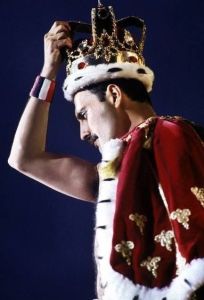
Of all Third Culture Kids (TCKs), Freddie Mercury is certainly the most famous. Everything about the man screams Rock Star– his outrageous outfits, his incredible talent, and his well-documented sexual exploits. Everyone seems to focus on these parts of him, but there’s another thing not many people talk about- the fact that he choose his culture, and it wasn’t what he was born into.
“Freddie’s…
Makeup and beauty tips for multicultural sisters, praising the magnificence of our diverse representations around the globe!
Ask anything about sisterhood on our FB live sessions with founder, Angela D. Coleman
https://www.facebook.com/sisterhoodagenda/
Post link

